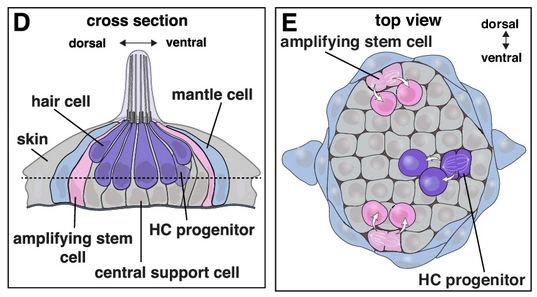By Anat V. Lubetzky, Ph.D.
Anat Lubetzky, Ph.D., demonstrates the use of a HTC Vive head-mounted display that helps create the environmental context in virtual reality for her balance studies.
Most activities of daily living require us to do two or more things at the same time, especially motor tasks (walking, standing, moving) with some form of a cognitive task (navigating, talking, decision-making). But it is not yet entirely clear what happens to balance performance in healthy individuals when they are also performing a cognitive task.
Several studies found that balance performance deteriorated (e.g., people are less stable and sway more) when attention needs to be divided. This is supported by an attentional resource-competition theory suggesting that our brain has some limited capacity and when we need to divide it—between control of movement and thinking—neither activity receives adequate attention, or one needs to be prioritized over the other.
Other studies found that balance improved when people allocated their attention to a cognitive task. The theory here is that balance control is largely controlled at lower, automatic brain levels while cognition requires high cortical function. As a result, attempting to overly control balance is not ideal. If we use higher brain resources for cognition, then we let balance happen automatically, as it should be.
In our study published in the Journal of Motor Behavior in December 2021, we investigated how these theories may work together. We hypothesized that some of the apparent discrepancy between these theories is related to how we measure balance. Twenty-three healthy young adults each stood in a heel-to-toe position while wearing an HTC Vive head-mounted display, via which they observed a display of stars on three walls that was static or dynamic. On half of the trials, participants also counted backward in intervals of three from a three-digit number.
We found that the amount of sway—particularly a side-to-side directional path and velocity—significantly increased when participants were counting, particularly with dynamic visuals, while side-to-side variance (how concentrated was the sway around its mean) decreased. When we analyzed the frequency components of the sway, we found that the increase in path was explained by an increase in high frequency (fast) movements and the decrease in variance was explained by a decrease in low frequency (slow) movements. Fast corrective movements are typically attributed to relying on somatosensory input for balance (joint position sense). Slower movements are associated with cortical control of movement.
We conclude that when adding a cognitive task (counting backward) to a challenging balance task (standing in a heel-to-toe position and observing a dynamic visual movement via the head-mounted display), young adults responded by increasing small corrective movements, and thus the overall path, while also reducing slow frequency movements, and thus the overall variance.
This suggests that both attentional resource-competition (the increased challenge to maintain position with the cognitive task) as well as a switch to a more automatic, somatosensory-based control of the stance took place simultaneously.
A 2019 Emerging Research Grants scientist, Anat V. Lubetzky, Ph.D., is an associate professor at New York University’s department of physical therapy. Read more about her research in the Winter 2022 issue of Hearing Health magazine where she discusses the exciting possibilities of her balance research and provides a summary of an earlier published paper.








Before I discovered CART, I often felt left out, despite being physically present. This gap in awareness affects thousands of people. That’s why I speak up, because access delayed is opportunity denied.